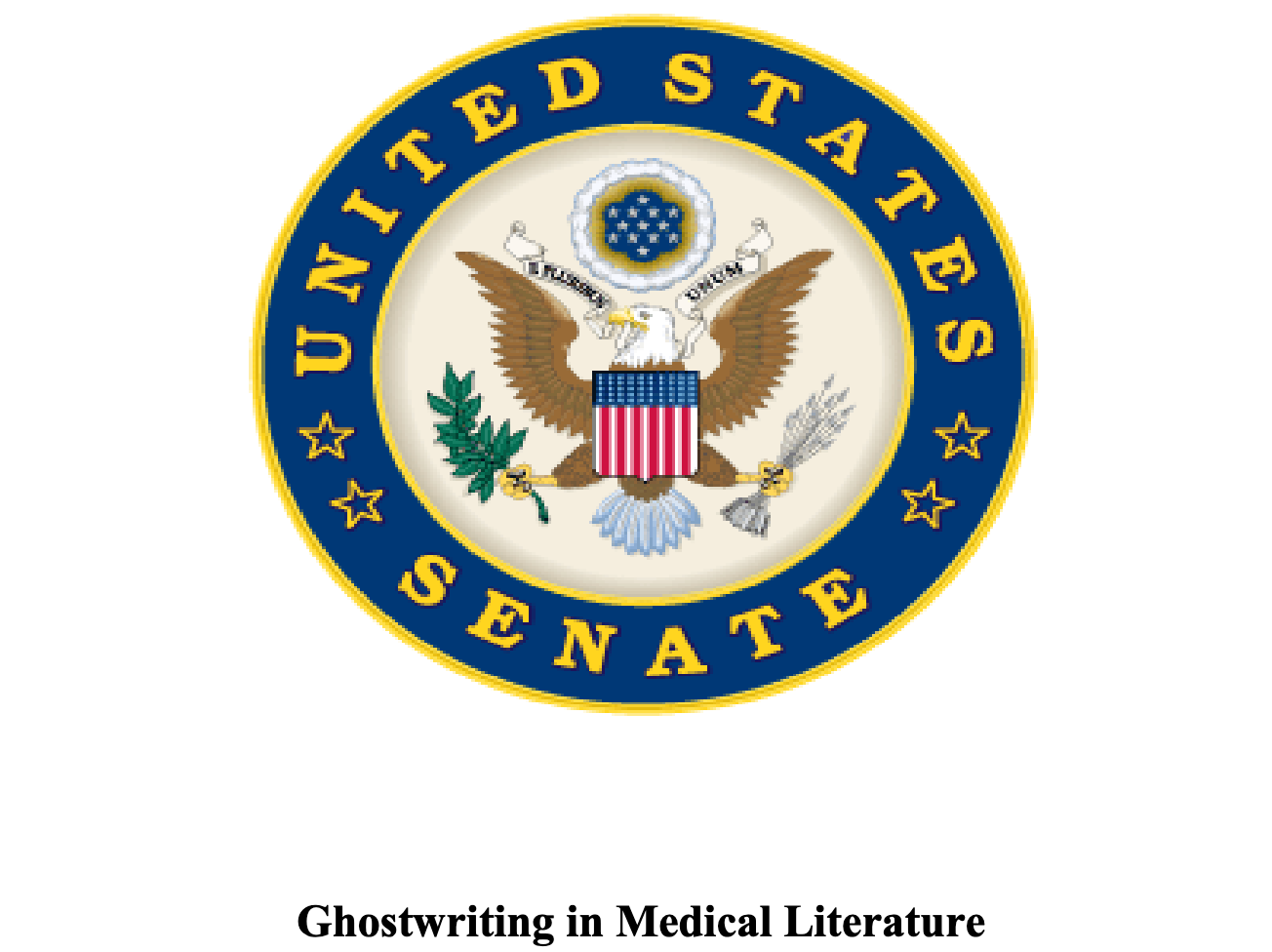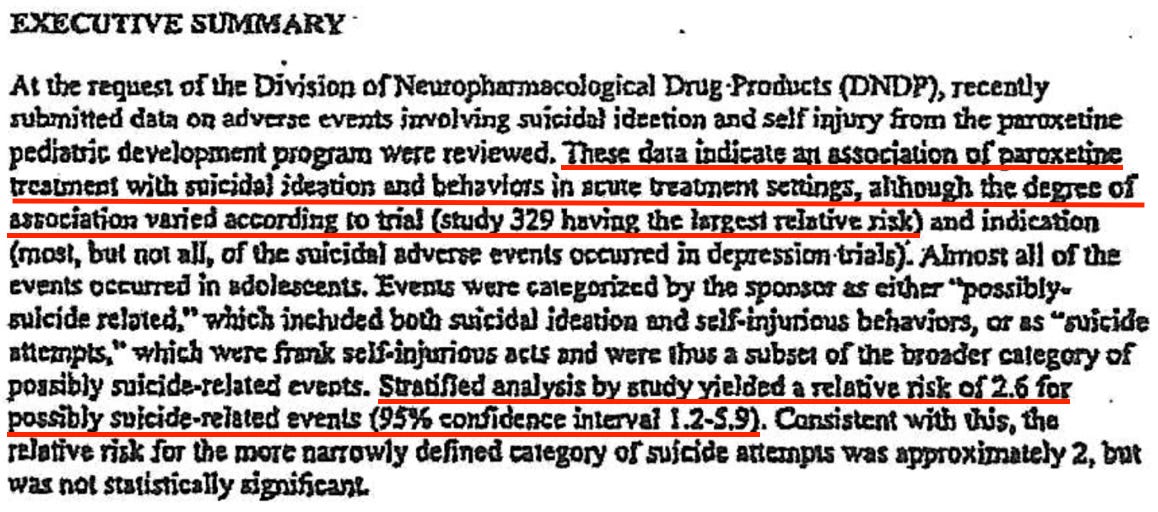Flaws and Fraud in Peer Reviewed Science
Science is a human endeavor corrupted by human vice.
7 minute read
I’m appearing today at a MAHA Institute Round Table to discuss corruption in science and the problems we have with peer-reviewed journals. I’ve been investigating corruption in science and medicine for over two decades and want to explain this problem to readers and provide two specific examples of tainted published studies that continues to harm all of us today.
First, let’s begin with peer reviewed journals.
Scientific journals have been around since the 17th century as a venue for researchers to share their thoughts and findings with other experts. And for all the eminence and acclaim attached to “peer review” all this term means is that a paper was reviewed by an expert. Peer review does not mean the editors replicated the study, checked the lab notebooks, or even redid the paper’s calculations.
In reality, peer review is just glorified editing.
In some cases, the peer review process can be harmful. A university researcher once told me that a colleague in his department was peer reviewing a study and slowed down the study’s approvial so he could rush out a competing paper and publish his results first. Peer reviewers also often approve shoddy results, fail to identify conflicts of interest, and hardly ever stop papers that were ghostwritten by corporations.
Digging into the researchers’ peer review comments, the New York Times discovered that a 1994 National Football League task force on traumatic brain injury omitted more than 100 diagnosed concussions from their studies. The NFL had used the task force’s bogus findings to downplay the dangers of head injuries.
I helped write a 2010 Senate Finance Committee report on ghostwriting in academic medical journals—a deceptive process in which pharmaceutical companies pay public relations agencies to write studies for professors. The editor of one journal told us he suspected that at least a third of the papers submitted to his journal were ghostwritten and that much of the academic literature was commercial marketing.
I’ve documented ghostwritten studies in dozens of journals, and ghostwriting scandals have involved professors at the University of Pennsylvania, Brown, Harvard, and many others. Court documents revealed in 2019 that Monsanto ghostwrote articles for scientists that they then published in peer-reviewed journals to counter research on the carcinogenicity of the pesticide glyphosate and to attack regulatory bodies.
Peer reviewed journals can also create gatekeeping problems, excluding important scientific findings. A study of 1,000 papers submitted to medical journals found that journals initially rejected the 14 papers that later became the most frequently cited. Nobel Prize winners including Sir Frank MacFarlane Burnet, Rosalind Yalow, Baruch Blumberg all had their ground breaking work stymied after rejection by journal peer reviewers.
So there’s a lot of problems with peer review. A lot of problems with journals. Nobody should take “published in a peer reviewed journal” to mean settled truth. Now let’s look at two examples of corrupt studies published in peer reviewed journals to further underline how problematic journals can be.
Study 329: Decades of Deceit and Harm
Back in 2001, the Journal of the American Academy of Child and Adolescent Psychiatry (JAACAP) published a corrupt study now known as Study 329 which alleged that Paxil was useful for treating adolescents with depression. GlaxoSmithKline has since deployed Study 329 as a marketing tool to drive up Paxil use in children. But in 2003, the UK’s regulatory warned doctors that Paxil could cause children to commit suicide. The FDA released a similar Public Health Advisory in 2004.
And then GlaxoSmithKline’s internal documents came spilling out in lawsuits, showing the company was hiding evidence of the link between Paxil and suicide. We now know that GSK hired a PR firm to ghostwrite Study 329 for Martin Keller, a now retired professor at Brown University.
The BBC ran an investigative report in 2007 on Study 329, calling it “one of the biggest medical scandals of recent times.” The televised program examined several internal company documents showing that GlaxoSmithKline engaged in a cover up and knew that Study 329 was flawed years before the results were published. The BBC also quoted Fiona Godlee, editor of the British Medical Journal, who called Study 329 a “problem” in scientific research.
The BMJ later published an investigation of Study 329 with critics calling the paper misleading and demanding its retraction. And a PLOS Medicine study of ghostwritten papers noted that, while Study 329 concluded Paxil was effective for treating depression, data made available through legal proceedings show that Study 329 was not effective and even harmful.
Lawsuits against GSK also uncovered a 2003 FDA analysis of Study 329 that found the data showed Paxil (paroxetine) was associated with an increased risk of suicide and that children had committed suicide during the study’s trial while on Paxil.
When reporting the data results, GSK hid these findings.
Experts have called on JAACAP to retract Study 329 for over two decades, but the American Academy of Child and Adolescent Psychiatry (AACAP), which owns and runs the journal, has refused to do so. Many of Study 329’s authors have prominent positions either within the AACAP or on the board of JAACAP. Yes, it’s a kind of mafia.
An attorney who represented families harmed by Paxil has now filed a lawsuit against AACAP for failing to retract this false and deceptive paper. He is seeking a retraction of the study which “continues to endanger adolescent mental health and safety as well as public trust in scientific integrity.”
Nature Medicine’s Corrupt “Proximal Origins” Paper
The second example of published scientific corruption is a notorious paper called “Proximal Origins” published by Nature Medicine on March 17, 2020, months after the COVID pandemic outbreak. The paper concluded: “Our analyses clearly show that SARS-CoV-2 is not a laboratory construct or a purposefully manipulated virus” adding that “we do not believe that any type of laboratory-based scenario is plausible.” Ever since its publication, virologists have deployed Nature Medicine’s “Proximal Origins” paper as a cudgel against anyone suggesting that the pandemic could have started in a Wuhan lab.
But just as with Study 329, emails became public painting a much different picture of “Proximal Origins.” The study’s lead author, Kristian Andersen at Scripps, passed drafts and a final version of the paper to two of the paper’s funders: Jeremy Farrar at the Wellcome Trust, and Anthony Fauci at the NIH.
In one example, Andersen emailed his funders Farrar and Fauci, “Thank you again for your advice and leadership,” a week before Nature Medicine published the paper. Andersen added, “We’re still waiting for the proofs, so please let me know if you have any comments, suggestions, or questions about the paper or press release.”
Congressional Republicans have argued that Tony Fauci secretly influenced “Proximal Origins.” To deflect these claims, House Democrats released a report that found Wellcome Trust’s Jeremy Farrar helped “organize and facilitate” the paper and “led the drafting process of the paper.”
“Jeremy, Dr. Farrar has been an amazing leader,” wrote “Proximal Origins” co-author Robert Garry in an email released by House Democrats. “Should be author.” Garry confirmed this sentiment when deposed by House investigators.
According to Nature’s editorial policy, “A specific role for the funder in the conceptualization, design, data collection, analysis, decision to publish, or preparation of the manuscript, should be disclosed.”
But neither Collins, Fauci, nor Farrar appear as authors on the paper, nor are they mentioned in the paper’s acknowledgement section. All three later cited the Nature Medicine paper as “independent” scientific evidence that a lab accident could not have started the pandemic.
The scientific community has long considered stealing people’s ideas or hiding someone’s role in scientific paper to be misconduct. In 2011, Nature published a letter by a professor who pointed out that a Danish scientific integrity law treats misappropriation of authorship as research misconduct. Several journals have also released a consensus statement that found research misconduct included “authorship malpractice such as guest or ghost authorship.”
The group BioSafety Now wrote an open letter to Nature Medicine, signed by over 50 scientists, demanding the retraction of the “Proximal Origins” paper. The group then started an online campaign that has garnered over 5,400 signatures petitioning Nature Medicine to retract the paper.
Nature publishing has done nothing to investigate this matter. The International Committee of Journal Editors (ICMJE) also refuses to investigate calls to retract Nature Medicine’s unethical paper. “Proximal Origins” was funded, in part, by the National Institutes of Health and should be referred to the Office of Research Integrity for research misconduct.
Are Science Journals Needed?
Like art, literature, and religion, science is one of many fields we use to try and understand the world. And as in the law, we have various systems in science to make the field fair and to try to control human bias. Unfortunately, humans created the field of science to control the problem of human bias, so bias is baked into the system. It’s something we simply can’t escape.
I spent a couple years at the Safra Center for Ethics when the Center’s researchers focused on the crisis of systemic corruption. Scholars at the Center created all these complex solutions to deal with systemic corruption, but I concluded that all of these solutions are corrupt, because like science, they are human solutions to deal with human problems. Again, the solutions themselves contain the very problem they are trying to solve.
Some years ago, I realized that my investigations into corruption involved what Catholics call the seven deadly sins: pride, greed, lust, envy, gluttony, wrath, and sloth. Mostly I deal with greed: companies or doctors who cut corners or lie to make money. But I’m also quite familiar with pride, meaning narcissists who think they know more than they actually do.
I’m not sure how solve the problem of corruption in science and medicine, except to keep trying to hold people accountable for their actions. It’s a constant struggle.






'Peer reviewed journals can also create gatekeeping problems, excluding important scientific findings. A study of 1,000 papers submitted to medical journals found that journals initially rejected the 14 papers that later became the most frequently cited. Nobel Prize winners...had their ground breaking work stymied after rejection by journal peer reviewers.'
It doesn't take deep thinking to realize that giving gatekeeping responsibility to people in the same field, whose funding and reputation could be damaged by any groundbreaking work, is just plain stupid.
I've come to think of peer review as Dogma Enforcement.
Paul, the depth of corruption is an almighty force. I don’t understand how it’s allowed to continue unless of course, very powerful industries run the show with funding of many segments of society. The wealth and influence appear to be a licence to kill and maim people as long as there’s money to be made, and we unfortunately, are the mere pawns in their game of Monopoly. A case in point was Vioxx made by Merck who dragged out the lawsuit with multiple delays that lasted about 5 years before it was removed from the market but not before many more people were murdered or harmed. Same is going on right now with Merck’s gardasil’s HPV. Doctor’s are still giving it to young people with no knowledge of the harms or lawsuits. A responsible health or regulatory agency should alert prescribing doctors to give informed consent before injecting kids, if they are even allowed to do so. Sadly, doctors still believe journals are the gold standard and haven’t a clue about the incestuous corruption, that’s been my experience when talking to them.